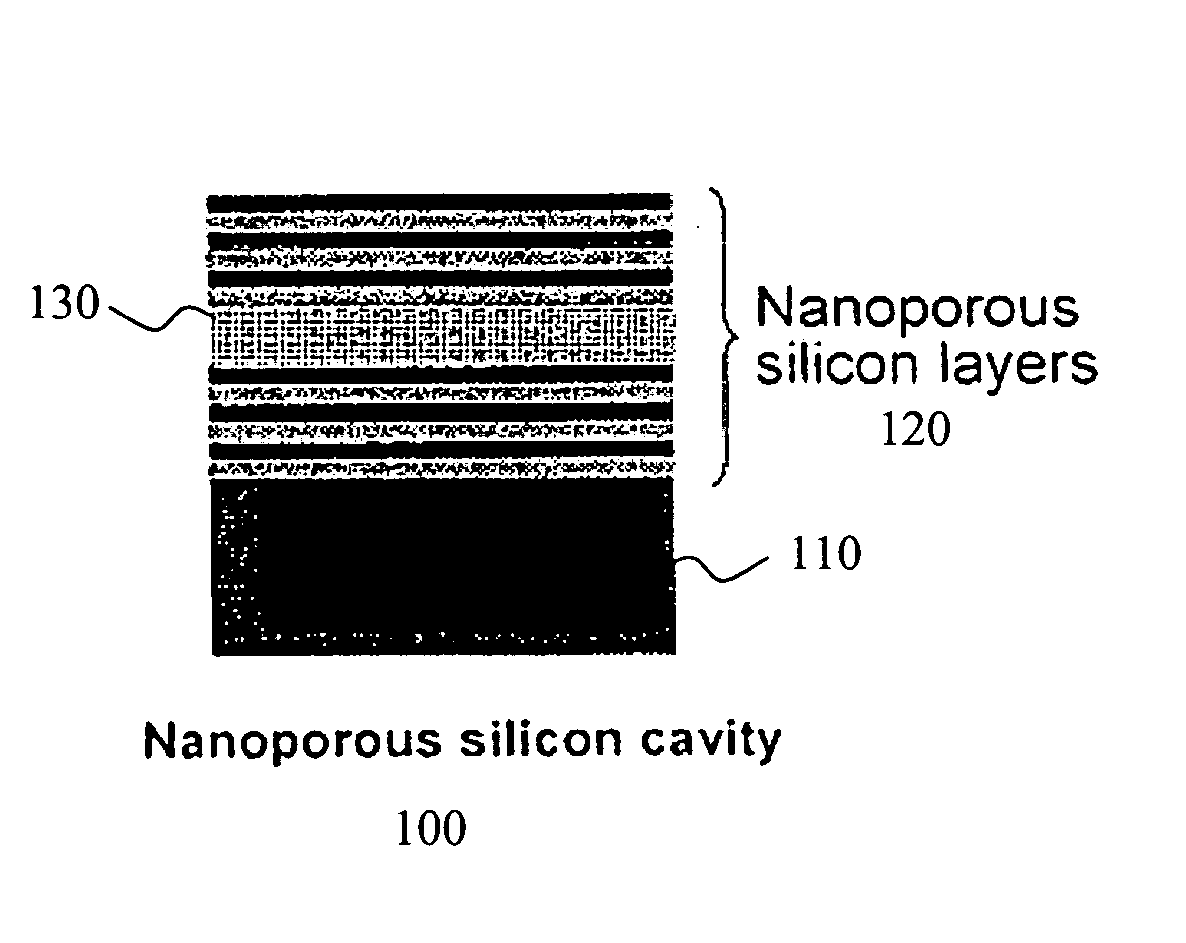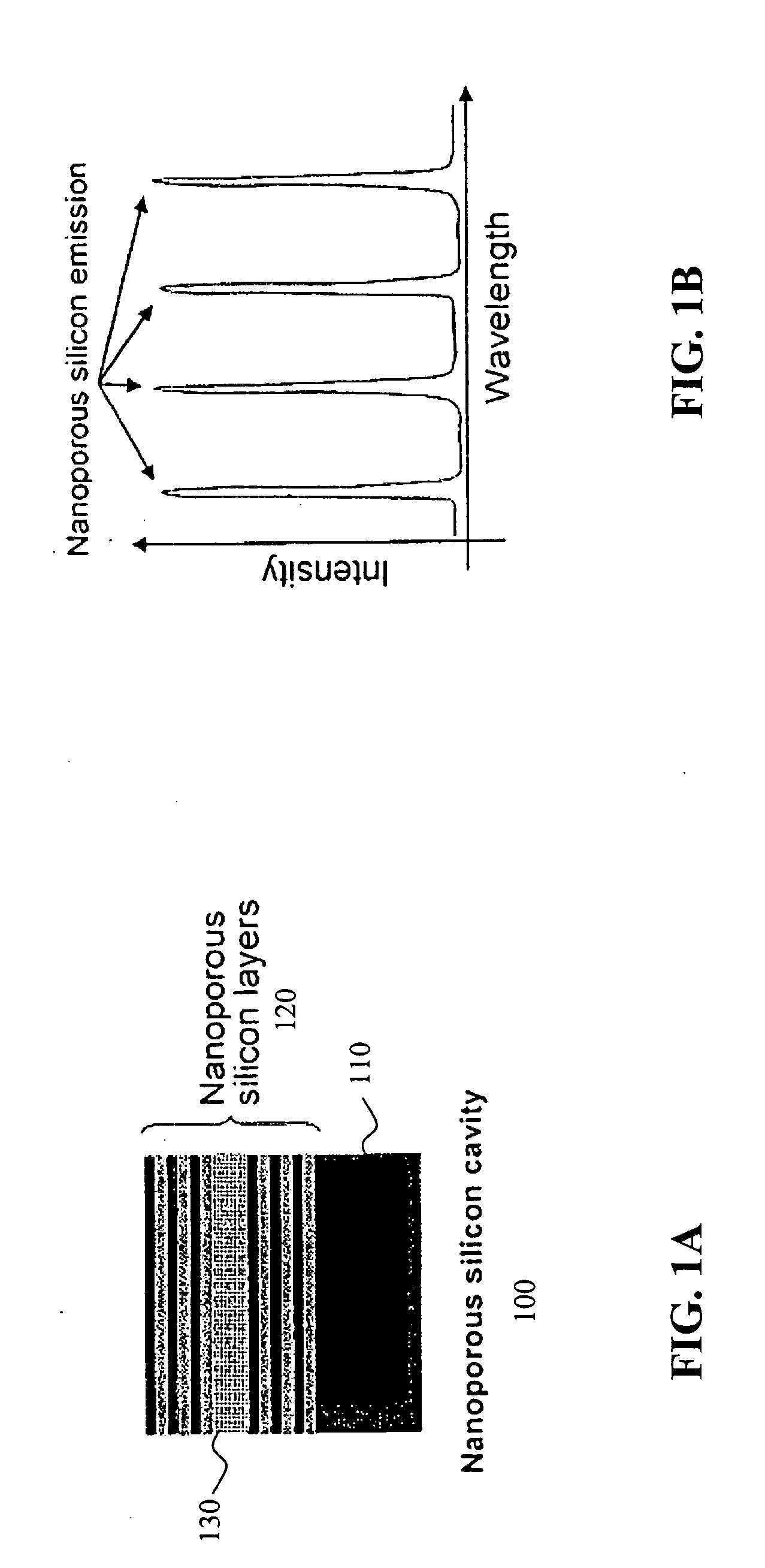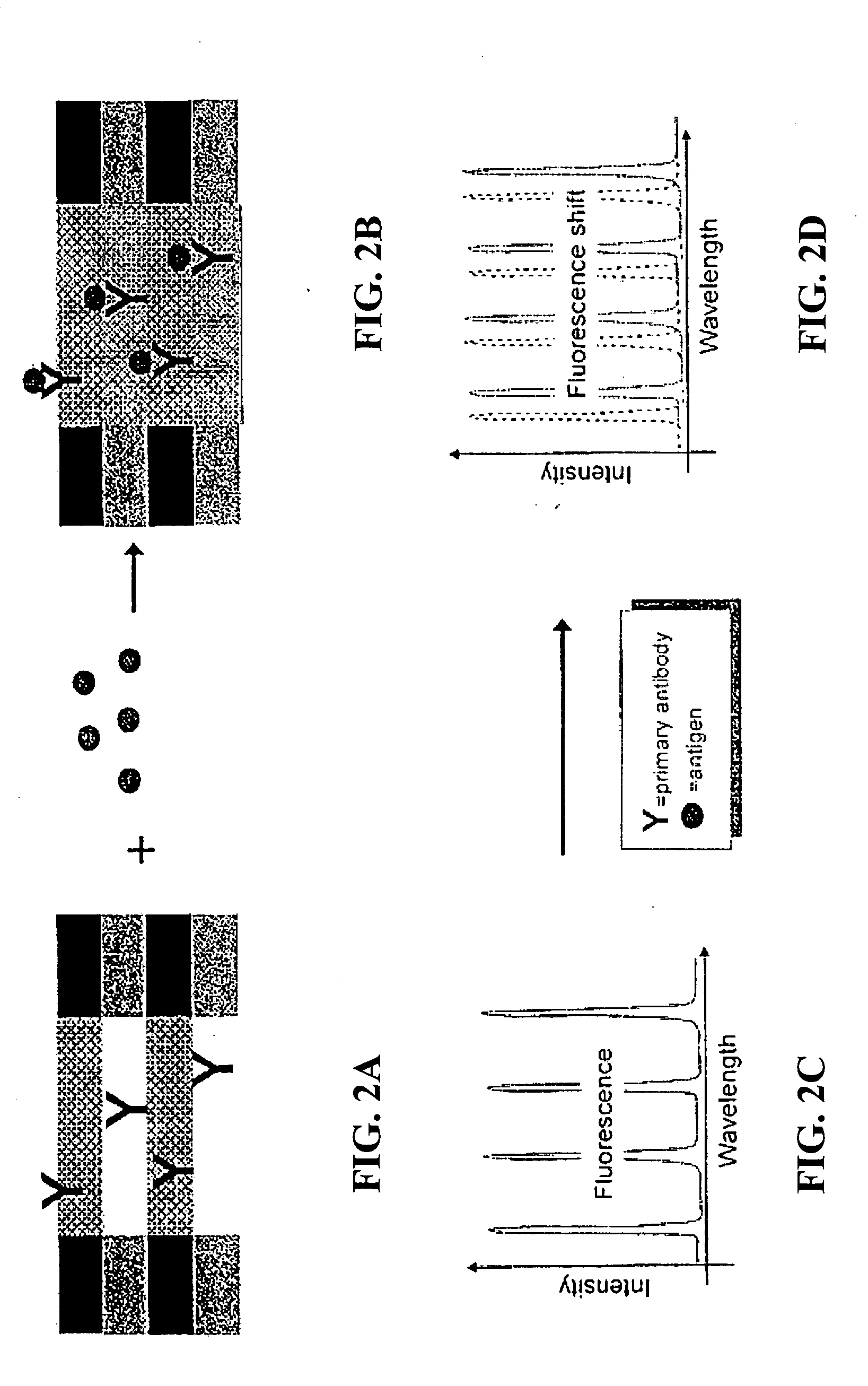Detection of biomolecules using porous biosensors and Raman spectroscopy
a biosensor and porous technology, applied in the field of porous biosensors, can solve the problems of complex detection of reflectivity shifts, time-consuming and inconvenient procedures, and limited quantitative analysis of such analytes
Active Publication Date: 2005-09-08
INTEL CORP
View PDF3 Cites 63 Cited by
- Summary
- Abstract
- Description
- Claims
- Application Information
AI Technical Summary
Problems solved by technology
Qualitative analysis of such analytes is generally limited to the higher concentration levels, whereas quantitative analysis usually requires labeling with a radioisotope or fluorescent reagent.
Such procedures are generally time consuming and inconvenient.
While such a biological sensor is certainly useful, detection of a reflectivity shift is complicated by the presence of a broad peak rather than one or more sharply defined luminescent peaks.
However, the technique of using these chemical enhancers has not proved sensitive enough to reliably detect low concentrations of analyte molecules, such as single nucleotides or proteins.
As a result SERS has not been viewed as suitable for analyzing the protein content of a complex biological sample, such as blood plasma.
Method used
the structure of the environmentally friendly knitted fabric provided by the present invention; figure 2 Flow chart of the yarn wrapping machine for environmentally friendly knitted fabrics and storage devices; image 3 Is the parameter map of the yarn covering machine
View moreImage
Smart Image Click on the blue labels to locate them in the text.
Smart ImageViewing Examples
Examples
Experimental program
Comparison scheme
Effect test
example
Identification of DNA by Raman spectroscopy
[0106] Single stranded DNA of identical sequence was labeled with a fluorescence molecule, TAMRA, at different locations (FIG. 4). Depending on the location of labeling, the labeled DNA molecules generated unique Raman signal, as shown in FIG. 5.
the structure of the environmentally friendly knitted fabric provided by the present invention; figure 2 Flow chart of the yarn wrapping machine for environmentally friendly knitted fabrics and storage devices; image 3 Is the parameter map of the yarn covering machine
Login to View More PUM
| Property | Measurement | Unit |
|---|---|---|
| pore size | aaaaa | aaaaa |
| FWHM | aaaaa | aaaaa |
| cross-sectional diameter | aaaaa | aaaaa |
Login to View More
Abstract
The invention provides methods used to analyze the contents of a biological sample, such as blood serum, with cascade Raman sensing. A fluorescence producing nanoporous biosensor having probes that bind specifically to known analytes is contacted with a biological sample and one or more bound complexes coupled to the porous semiconductor structure are formed. The bound complexes are contacted with a Raman-active probe that binds specifically to the bound complexes and the biosensor is illuminated to generate fluorescent emissions from the biosensor. These fluorescent emissions generate Raman signals from the bound complexes. The Raman signals produced by the bound complexes are detected and the Raman signal associated with a bound protein-containing analyte is indicative of the presence of the protein-containing compound in the sample. The invention methods are useful to provide a protein profile of a patient sample. The invention also provides detection systems useful to practice the invention methods.
Description
BACKGROUND OF THE INVENTION [0001] 1. Field of the Invention [0002] This invention relates generally to porous biosensors useful for identifying the presence of a biomolecule in a sample and, more particularly, this invention relates to the use of Raman spectroscopy and nanoporous semiconductor-based biosensors for determining the presence of biomolecules in a sample. [0003] 2. Background Information [0004] Ever increasing attention is being paid to detection and analysis of low concentrations of analytes in various biologic and organic environments. Qualitative analysis of such analytes is generally limited to the higher concentration levels, whereas quantitative analysis usually requires labeling with a radioisotope or fluorescent reagent. Such procedures are generally time consuming and inconvenient. [0005] Solid-state sensors and particularly biosensors have received considerable attention lately due to their increasing utility in chemical, biological, and pharmaceutical researc...
Claims
the structure of the environmentally friendly knitted fabric provided by the present invention; figure 2 Flow chart of the yarn wrapping machine for environmentally friendly knitted fabrics and storage devices; image 3 Is the parameter map of the yarn covering machine
Login to View More Application Information
Patent Timeline
 Login to View More
Login to View More Patent Type & Authority Applications(United States)
IPC IPC(8): G01N21/65G01N33/543
CPCG01N21/6428G01N33/54373G01N21/658G01N21/65G01N33/543G01N33/53G01N21/63
Inventor CHAN, SELENAKOO, TAE-WOONG
Owner INTEL CORP
Features
- R&D
- Intellectual Property
- Life Sciences
- Materials
- Tech Scout
Why Patsnap Eureka
- Unparalleled Data Quality
- Higher Quality Content
- 60% Fewer Hallucinations
Social media
Patsnap Eureka Blog
Learn More Browse by: Latest US Patents, China's latest patents, Technical Efficacy Thesaurus, Application Domain, Technology Topic, Popular Technical Reports.
© 2025 PatSnap. All rights reserved.Legal|Privacy policy|Modern Slavery Act Transparency Statement|Sitemap|About US| Contact US: help@patsnap.com



